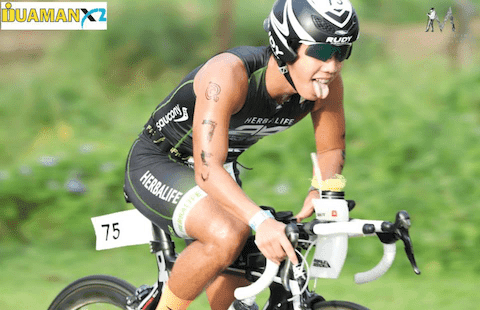3 Most Important Bike Sessions in Triathlon

After nearly two decades of being involved with triathlon, both as an amateur triathlete, professional triathlete and coach, I had the opportunity to train and learn from the best coaches and athletes in the world.
Whenever I train with a renowned athlete or work alongside a coach with good results, I try to learn something and when possible add that information to the training I pass onto my athletes.
However, unlike any magic formulas or secret training sets, most sessions end up being very similar, with a certain structure that although is different in detail, ends up being part of one of the three workouts below.
As much as there are differences in the sessions of long and short course racing, some sets are the core of every distance at some point in the training plan, be it during a general or specific preparation.
Before we get to the specifics of the workouts, we need to understand the basic physiology of the event in which you will participate:
Short Course (Sprint or Olympic Distance)
Considered “short” races in triathlon, these events are still predominant, aerobic, but you’ll spend more time close to your anaerobic threshold, which means that a lot of your workouts need to be done at that intensity.
Ironman or Half Ironman
You spend most of your time on the bike in these long races, and cycling fitness is also a good base for a strong run split. Once you understand that cycling is also your run training, it will be clear that you need to spend a lot of time on your bike to build endurance in order to finish the bike leg relatively fresh to start the run.
Your cycling workouts will also have an impact during the race on race day.
Types of training
1) Endurance (Resistance)
Main physiological benefits:
- Conversion of fast-twitch muscle fibers to slow- twitch fibers
- Increases muscle glycogen storage
- Increases fat oxidation
Endurance sessions are mostly easy to moderate effort training which you can spend hours on without feeling too fatigued. Short course athletes should do in between two and three hours weekly, mostly at a very low intensity to also absorb all the hard work they do on the other days of the week.
Long course athletes should do between four and six hours, at a lower intensity in order to improve their endurance and efficiency of the use of fat as an energy source. Then as they get fitter, race specific sets should be added to these rides.
Workout Examples:
- Three hours negative split (first half easy, second half moderate)
- Five hours alternating between twenty minutes easy, forty minutes moderate
2) Anaerobic Threshold/VO2
Main physiological benefits:
- Increase blood plasma volume
- Increase anaerobic threshold tolerance
- Increase enzyme count in the muscle mitochondria
Anaerobic threshold or VO2 workouts are intensity workouts of the week, usually on a time trial format (individual or team), and ideally on hill repeats or on the indoor trainer. If on the roads, make sure it is safe and quiet so you can focus on the intensity.
It is advised that you often break the main set down in short repeats as these intervals help athletes to maintain a high intensity which would not be possible if they are a little fatigued from the accumulated training and do the training continuously as a one repeat set.
The combined volume of repetitions should be between fifteen minutes for VO2 sets, up to forty minutes to your anaerobic threshold. The ratio should be 1: 1(work: rest) to VO2 sets (eg: for each minute of work, you also get one minute rest) and the ratio of 2: 1 for the threshold set (eg: four minutes with two minutes rest).
Workout Examples:
- 30 minutes alternating between three minutes maximum with three minutes of active rest (very slow)
- Ten reps of four strong minutes, with two minutes of rest
3) Strength
Main physiological benefits:
- Increased neuro muscular strength
Strength training is usually performed at a low cadence(between 30 and 60 rpm) or uphill, but short in time and high intensity. It is usually underlooked by most triathletes who train only based on heart rate zones, as during this type of training heart rate is irrelevant since the focus shifts to muscle load rather than aerobic load.
As explained before in previous articles published by ironguides, we favor a relatively low cadence or at least lower than the run cadence. We believe it is the most efficient way to race a triathlon event considering also the high aerobic load you get from swimming and running.
This strategy shifts the focus of cycling training, which should be largely related to strength training but bike specific. What are the best ways to improve strength on the bike? How to incorporate them into your week of training? Plus, what is the periodization during the year?
An easy way to explain the benefits of strength training for our triathletes is making an analogy with a sales strategy of “Pay for 1, take 2”, as when you work on strength on the bike, you will also improve your aerobic fitness and endurance.
Workout Examples:
- 10 repeats with a maximum time of 30 seconds in low cadence, preferably up a hill with three minutes of rest
- 30 to 60 minutes alternating between 1 minute hard in a low cadence with one minute rest
Periodization of your training cycle using the above training
In general, it is interesting to always schedule one workout of each of the systems described above for almost every week of the year. The only exceptions are race weeks, when you must consider the energy system to be used in that race as you don’t want to fatigue that same system too much on race week. If anything, just a quick recruitment session to keep it all firing is enough.
Short course athletes should avoid threshold/vo2max work during race week.
Long course athletes should avoid endurance training during race week.
Another important observation is in relation to the training details. The above examples show only the essence of each of the 3 important types of training, but your coach should adjust the amount of repetitions, length of them and intensity in your plan considering:
Your strengths and weaknesses
Experiencein the sport
Race day goals
Training goals for each training block
This way, you keep a little stimulus for all the main systems throughout the year, but you change the focus of your training and overload a specific system depending on the training goal for that program.
Written By : Vinnie Santana / ironguides.net
Written For : SWIMBIKERUN.ph










